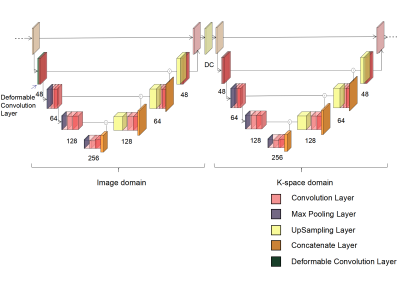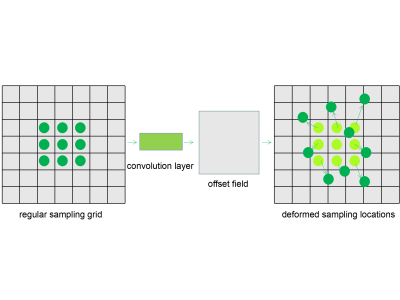Zhehong Zhang1, Yuze Li2, and Huijun Chen2
1Department of Engineering Physics, Tsinghua University, Beijing, China, 2Department of Biomedical Engineering, School of Medicine, Tsinghua University, Beijing, China
1Department of Engineering Physics, Tsinghua University, Beijing, China, 2Department of Biomedical Engineering, School of Medicine, Tsinghua University, Beijing, China
We present a new method that incorporates deformable 2D convolution kernels into the cascaded U-net. The proposed method leverages motion information of dynamic MRI and thus deformable convolution kernel naturally adapts to image structures.

Figure 2: An example of the concatenation of U-net blocks which operate in either image domain or k-space domain with data consistency layer in between. The deformable convolution layer, which extracts the motion feature and generates offsets from a series of dynamic MRI, is at the beginning of the U-net block on the image domain.

Figure 1: The illustration of the generation offset fields and the performance of deformed sampling. The offsets are obtained by applying a convolution layer over the same input feature map. The channel dimension of the offset fields is twice as much as that of the input feature maps, given the 2D offsets.